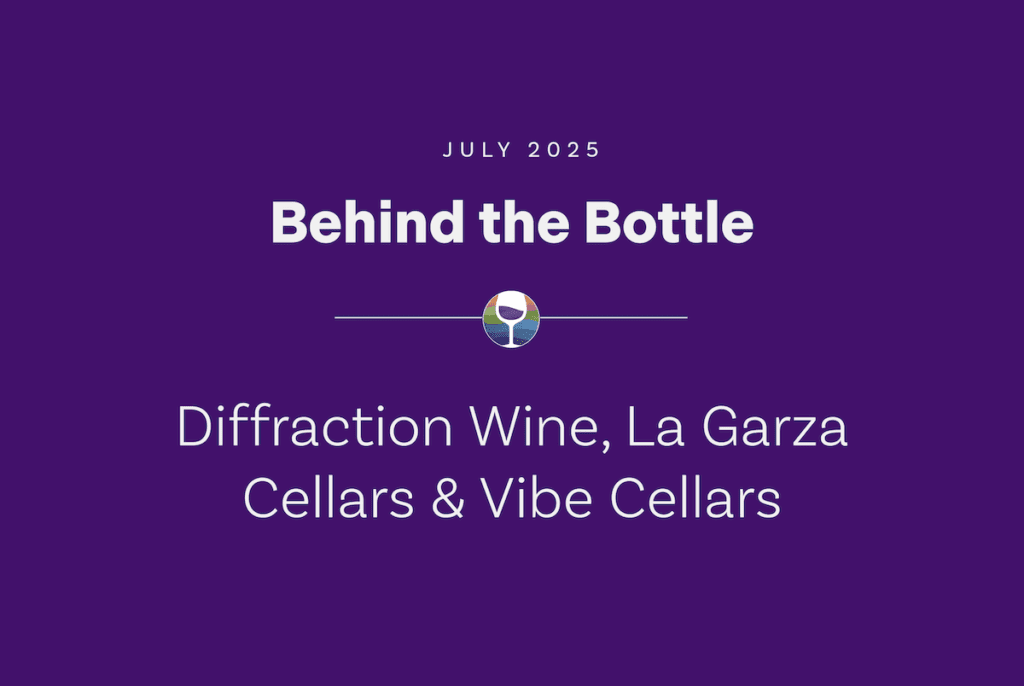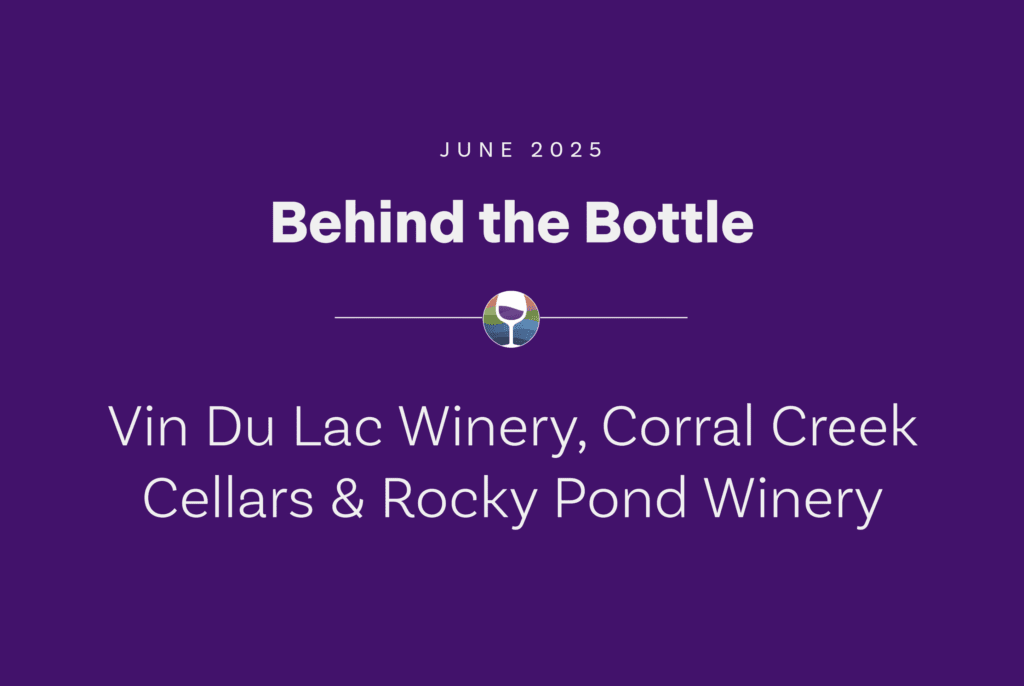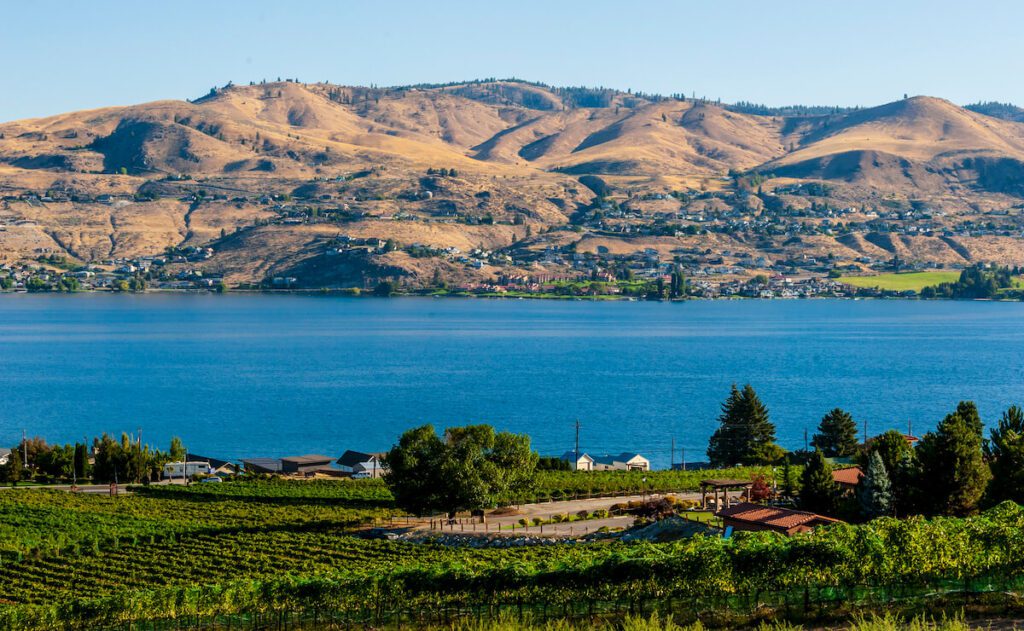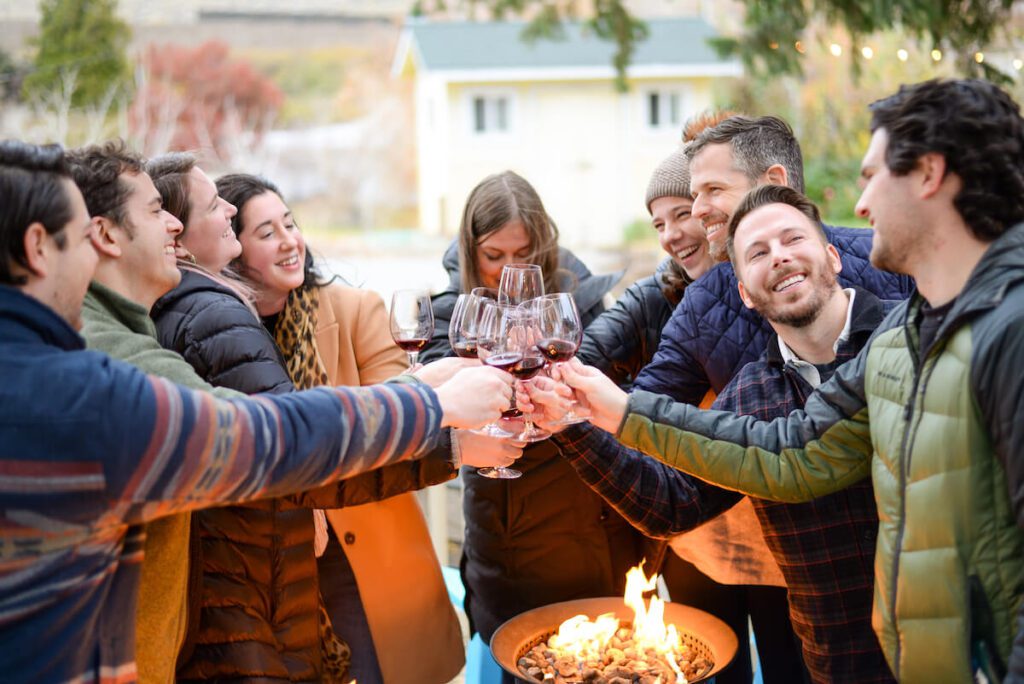Winter Freeze in Lake Chelan: Impact & 2024 Harvest Outlook
Winemaking carries a romantic allure, making it easy to forget that vineyard management is very much a farming practice. Like all agriculture across Washington State, the vines are at the mercy of Mother Nature’s volatility.
Devastating weather events are not unheard of. In Washington State, vineyards can rely on a potentially damaging winter freeze an average of once every twenty years.
Unfortunately, 2024 is the second year in a row the Lake Chelan Wine Valley has seen below 0-degree Fahrenheit temperatures, setting up our wine region for another questionable growing season.
Because the Lake Chelan AVA is relatively young (established in 2009), these are the first significant freezes experienced by area vineyards, making this a novel experience for many wineries and growers.
However, these events are a normal part of farming with mostly short-term impacts on production. The Lake Chelan Valley continues to look forward to a great spring and summer season with plenty of inventory from a fantastic variety of vintages.
Here’s the impact of the January 2024 freeze and the outlook for the grape growing season ahead.
The January Freeze: What Happened?

During the week of January 12th, 2024, temperatures dipped considerably across Washington State.
Many of the primary wine-growing regions — including Walla Walla and the Columbia Valley, home to the Lake Chelan AVA — saw temperatures below -12 degrees Fahrenheit. Other areas, such as Yakima and Red Mountain, fared slightly better, with lows around 0 degrees Fahrenheit.
It’s important to note that weather events like these aren’t unprecedented. Additionally, damage to the vines depends on the location of the vineyards, varietals grown, and pruning techniques.
While some vineyards are anticipating damage, others are less impacted, thanks to site specifications and the warming effect of Lake Chelan.
Anatomy of a Grapevine System
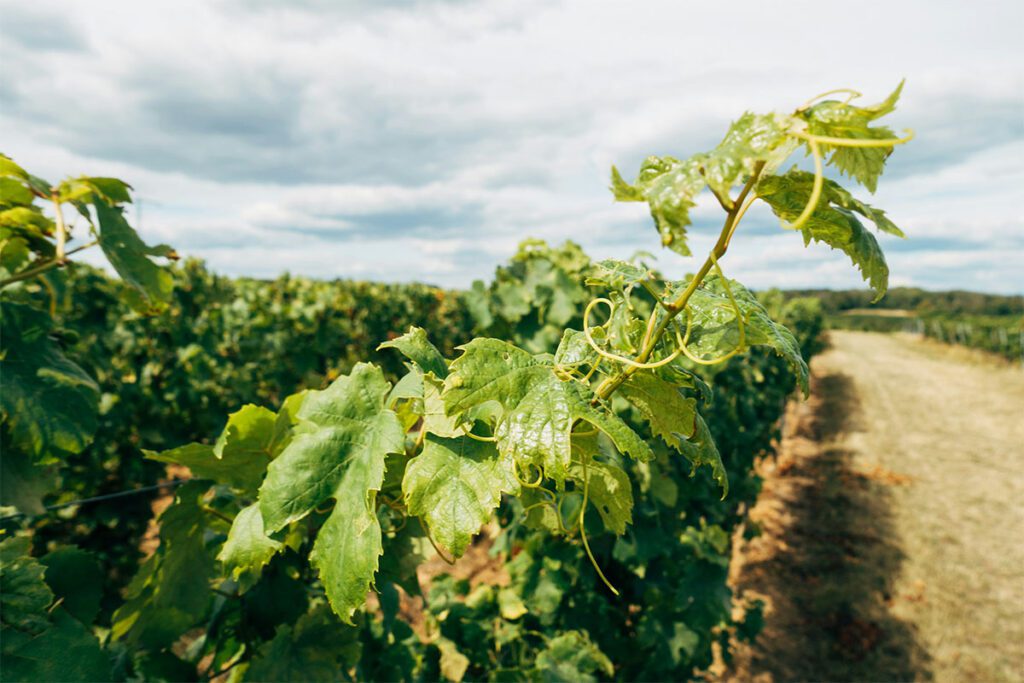
To understand how freezing temperatures impact grape growth and development, it’s important to understand the anatomy of the grapevine system:
- Vine
The vine itself is the main body of the plant, comprising the trunk and the shoots.
The trunk supports and transports nutrients and water from the roots to the rest of the plant. The shoots grow from the trunk and branches and carry leaves, flowers, and grapes.
- Cordon
The cordon is a horizontal branch extending from the vine’s trunk. It’s trained along a trellis system and is a permanent structure from which shoots and clusters grow.
Cordons are essential in vine training systems and help distribute the fruit load evenly across the vine.
- Spurs
Spurs are short stubs that grow from the cordon and are left behind during pruning. They contain one to three buds that will grow into shoots, producing grapes.
The number of spurs and their spacing can affect the vine’s productivity and the size and quality of the grapes.
- Buds
Buds are small growths on the vine that develop into new shoots, leaves, and clusters of grapes. Primary, secondary, and tertiary buds are essential for the vine’s ability to produce fruit after damage or in challenging conditions.
The primary bud contains the initial shoot and grape cluster for the season. The secondary buds produce around 50% of the full potential, and the tertiary buds operate at enough capacity to keep the grapevines afloat.
Each component plays a critical role in the grapevine’s lifecycle and productivity.
Proper management of these parts through pruning, training, and care can significantly impact the quality and quantity of grapes produced, affecting the overall success of a vineyard, especially during extreme weather events.
Impact of Freezing Temperatures on Grape Production

This time of year, the only way to assess vineyard damage is by observing the interior condition of the buds. This is accomplished by taking a razor blade and cutting back the bud to see what’s happening inside.
“If you see green, good. If they are darker in color, it doesn’t bode well,” explained Ryan Macnamara, Owner and Vineyard Manager at Antoine Creek Vineyard.
Damage to the primary bud isn’t a death sentence, though. The secondary and tertiary buds act as backup systems, offering a shot at grape production even if these buds generally produce less fruit than the heartier primary bud.
Much of the damage observed across the Lake Chelan AVA is at the primary level, reducing crop yield for some vineyards. Even with primary bud damage, the vines can produce a healthy supply of fruit at the secondary level. For now, the true extent of the damage won’t be known until after bud break in early June.
Different grape varietals are affected by extreme cold depending on their cold hardiness. For example, Riesling and Gewürztraminer are generally more resilient to the cold than Chardonnay and Malbec.
While cold hardiness plays a role, damage to the vine also hinges on the vineyard’s location. Malbec grown on a slope near the lake, where there’s plenty of airflow and proximity to the warming effects of Lake Chelan, will fare better in freezing conditions than Malbec grown in a flat area set back from the lake.
Anticipated Impacts Across Lake Chelan Vineyards

Antoine Creek Vineyard
Antoine Creek Vineyard consists of 13 acres of plantings on its 30-acre farm situated on the banks of the Columbia River. The river and vehicle activity on the adjacent Highway 97 produces warmth and airflow that help shield the vines against the bitter cold, though not always successfully.
So far, they’re encouraged to have found less than 10% bud damage throughout their crop. However, their block of Malbec sits in a different area that’s been more affected.
“The Malbec is more exposed to wind than our other grapes. We’re predicting about 80% primary bud damage on that block in particular,” said Ryan Macnamara.
Ryan emphasized they won’t know the real impact until harvest, but he’s hopeful there’s less damage than last year when they saw a 20% reduction in volume.
“Relative to other Washington State vineyards, we’ve fared a little better this year,” Ryan said.
Hard Row to Hoe Vineyards
Located in the hills of Manson, Hard Row to Hoe has approximately 20 acres of estate vineyards.
“The damage is significant, but we won’t really know until June,” explained Julian Shaver, Head Winemaker.
Julian anticipates a yield similar to last year’s crop, about half of the average yield due to the December 2022 freeze.
“We didn’t get any Malbec last year and only about half of the normal yield for our Cab Franc and Chardonnay,” he said. While it’s difficult to identify patterns in the damage, the early-picking grapes, including Pinot Noir and Gamay Noir, have seen little to no damage.
Regarding the next steps, the Hard Row crew will take this opportunity to “clean things up” for future crops.
“This gives us an opportunity to get the grape vines more organized and manage the canopy so that next year, we’ll have a good base for growth,” explained Julian.
Tsillan Cellars
Tsillan Cellars is located on the gently sloping south shore of Lake Chelan, with almost direct proximity to the lake. This means temperatures stay slightly warmer than other vineyards thanks to the “lake effect,” which reradiates heat stored in the summer in the colder months.
With 32 acres of vineyard, Tsillan Cellars boasts a wide range of varietals with varying levels of cold hardiness. Less cold hardy varietals, such as their Chardonnay, are more susceptible to damage from the freeze than more cold hardy varietals like Riesling.
“In an average year, we expect around 10-15% bud damage,” explained Nic Stevens, Vineyard Manager and Assistant Winemaker. “With this vintage and the duration of the cold snap, we’re expecting more.”
Tsillan Cellars is also home to a WSU weather station, which generates real-time data on temperatures, and soil and grape health.
“Based on the data from the weather station, our Pinot Grigio and Sangiovese are at the most risk of damage. We’ll know more about the extent of the damage after bud break,” said Nic.
Lake Chelan Valley
With Chelan Vineyard Management, Charles Smasne helps manage 24 vineyards across the Lake Chelan Valley.
Charles has worked in agriculture most of his life and has over thirty years of vineyard management experience. As such, he’s no stranger to the impacts of extreme weather on the grape-growing process. “It’s no surprise to see a freeze like this,” he expressed.
“We’ve seen a wide range of damage, from 100% primary bud kill on certain varietals to 0% on winter-hardy varietals. It’s very location and varietal-dependent,” said Charles. On the whole, he stated, “There’s no panic mode for us.”
Mitigation Techniques
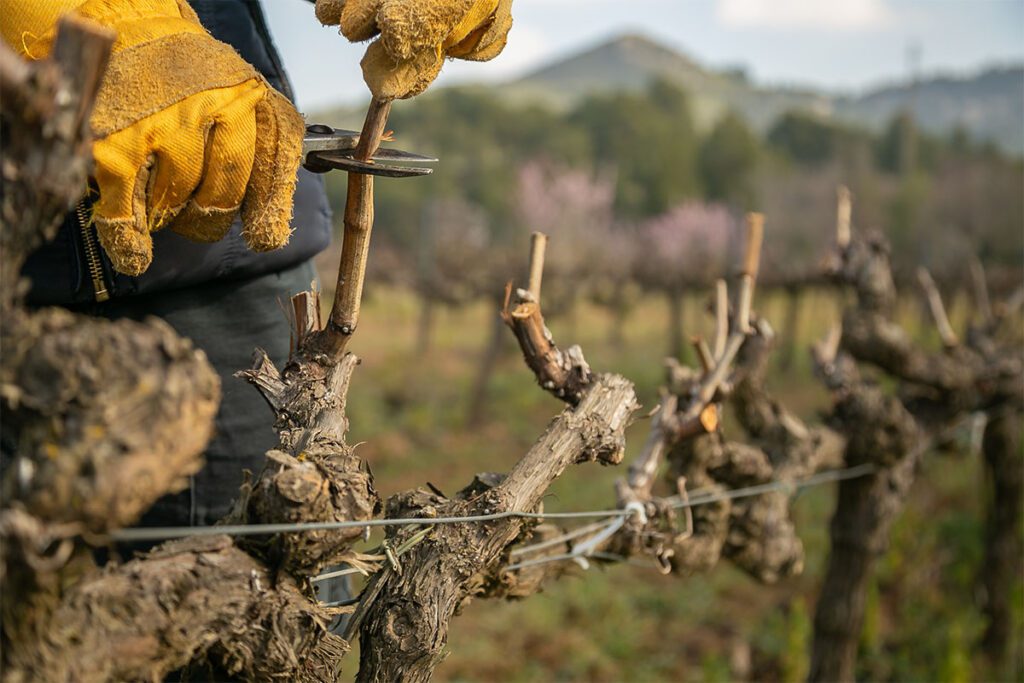
One consistent across the Lake Chelan Valley is mitigation strategies for bud damage, which can only be accomplished via pruning.
In a typical year, vineyard workers cut back the growth in late winter to leave 2-3 buds per spur position. This allows the vine to concentrate its energy and nutrients on only those 2-3 buds, maximizing growth for those grape clusters.
In a freeze year, things are a little different. Wineries will leave 3-4 buds while pruning to offset the loss from other vines. “You can always get rid of extra buds later, too,” explained Nic.
Pruning is a careful dance requiring a balance between setting the vine up for healthy growth without overloading it. As Charles stated, “If you leave too many buds, you’re asking the vine to jump off the couch and run a marathon.”
The timing of pruning is also critical, especially in Lake Chelan AVA, where the growing season is shorter than in other areas of Washington State.
Leaving too many buds on the vine for too long can delay bud break, which kickstarts the grape growing process and ensures the grapes reach their full potential during the growing season window.
“Ideally, we’re done pruning by March 1st, so we’ve made sure we’ve directed the energy into the buds we want to grow for the year,” said Charles.
Regarding preventative techniques, vineyard managers will employ their standard practices.
“In the fall, we’ll mound dirt at the base of the vines to protect the roots and trunk from cold,” said Nic, which helps to insulate the vines against extreme cold.
According to Charles, “there’s no cure for this type of freeze,” who cited vine health and quality as the primary focus areas moving forward.
“Overstressed and overvigorous vines are more vulnerable to freeze. So vine balance and health is really key.”
In other words, prevention happens year-round by carefully tending to vines, providing sufficient nutrients, and not overwatering.
2024 Crop Outlook: TBD

The extent of damage varies across Lake Chelan vineyards. Some wineries anticipate a crop yield similar to last year’s, while others are gearing up for more significant loss.
Only once the buds break can wineries truly assess the damage’s extent and adjust vineyard management and production accordingly.
Moving forward, vineyards will set their sights on pruning techniques and vine health to maximize grape production in hopes of recouping losses and setting up the vines for a healthy 2025.
On the whole, grape growers across the area acknowledge that extreme weather events are a natural part of the farming business, and one year of crop reduction isn’t a cause for panic.
Growers and winemakers in the Lake Chelan Wine Valley will continue to showcase exceptional wines in 2024 and beyond.



